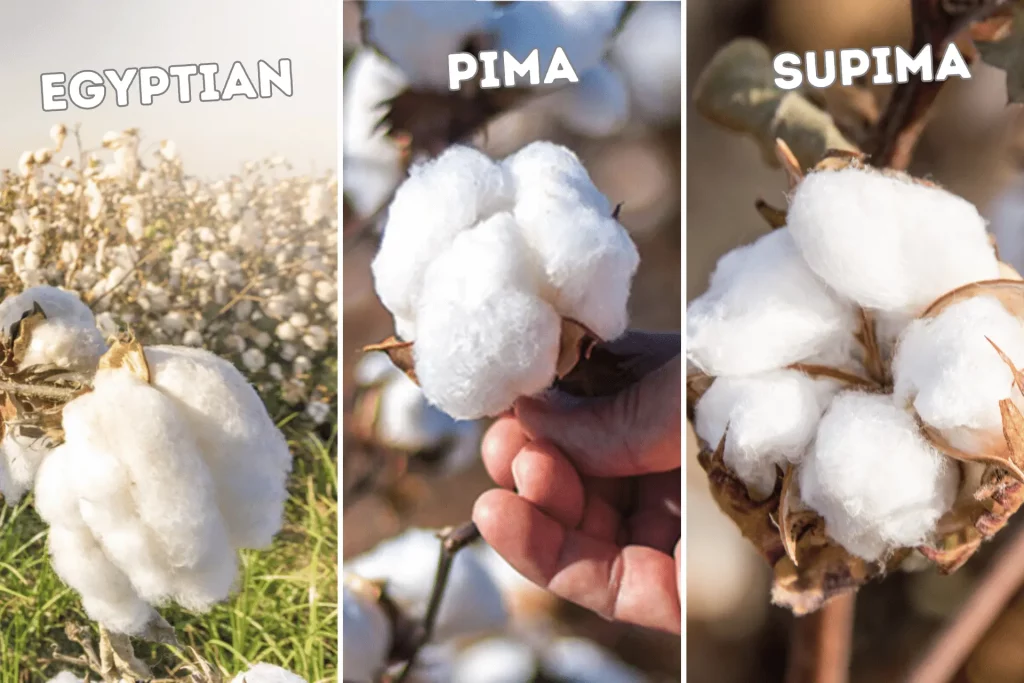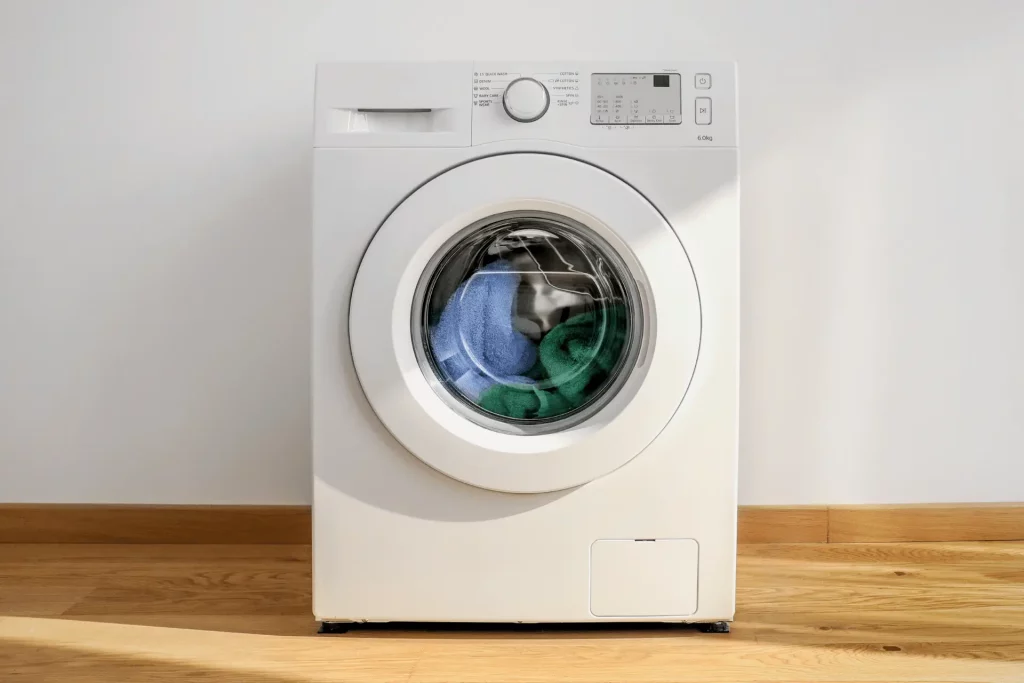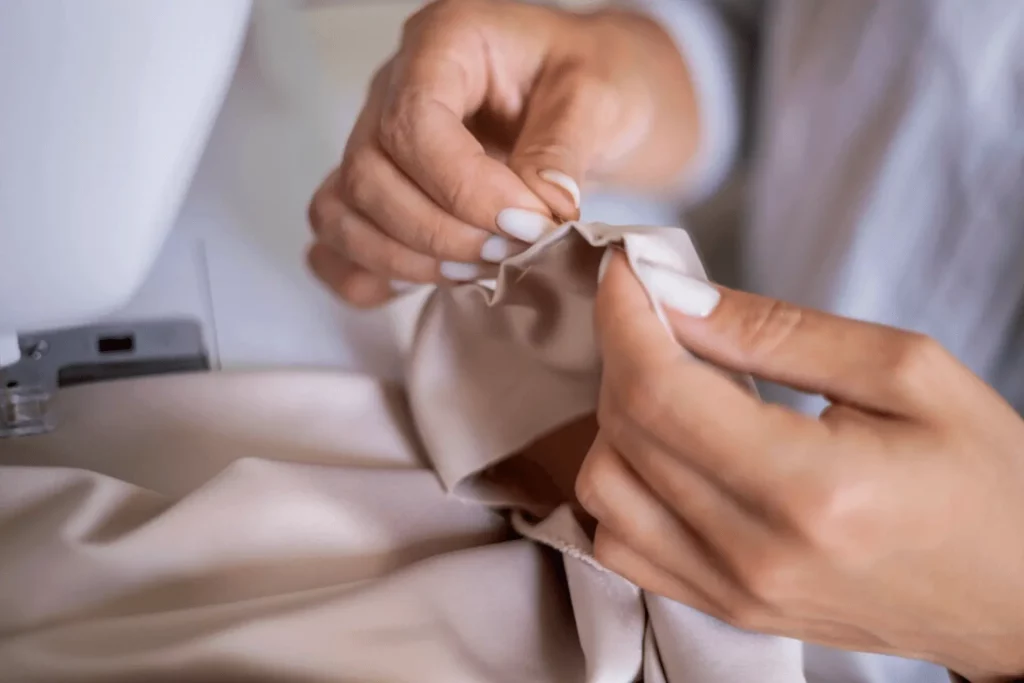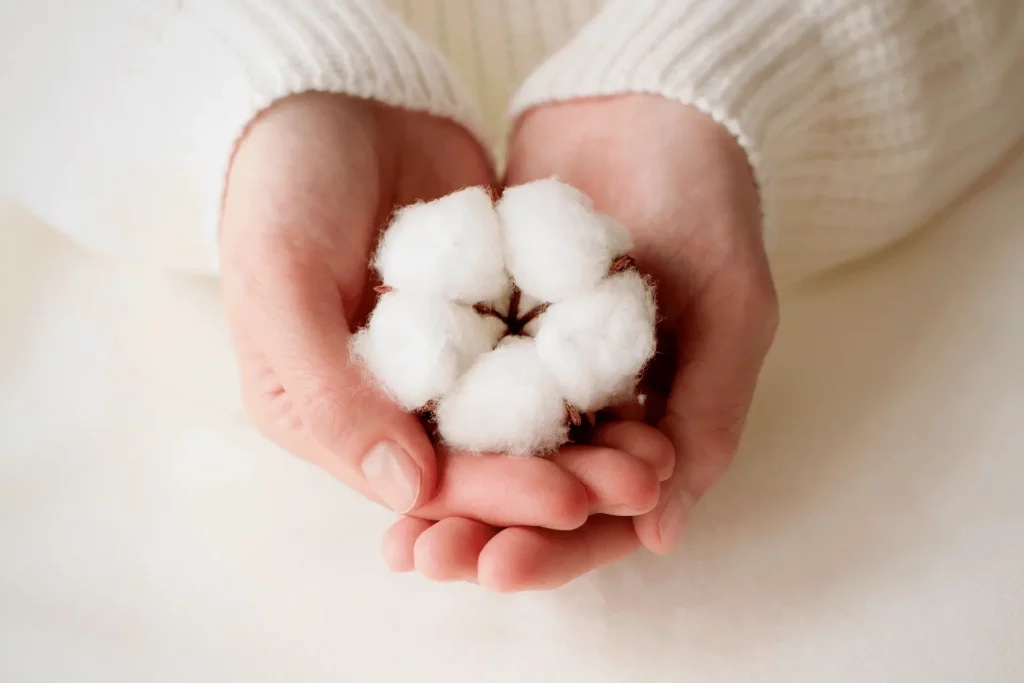Cotton, a natural and adaptable fabric, has been a mainstay in our homes and wardrobes for many decades. Cotton is used for everything from garments and bed linens to towels and upholstery because of its coveted breathability, durability, and softness. It is no wonder that we resort to cotton for these purposes.
Carefully handling your cotton products is necessary if you want them to retain the attractive attributes they possess and last for as long as possible. In this piece, we will discuss the many elements of cotton care, giving professional guidance and helpful hints to guarantee that the cotton things you cherish will retain their newness, vibrancy, and comfort for many years.
Table of Contents
Understanding Cotton:
1. A Synopsis of the History of Cotton:
Cotton has a long history of being farmed and utilized by humans, reaching back to ancient civilizations in India, Egypt, and the Americas. Cotton was first cultivated in India.
According to the findings of several archaeological digs, cotton was probably initially tamed and domesticated approximately 6000 BCE in the Indus Valley region of what is now Pakistan and India. Its natural fabric is known for its breathability, suppleness, and adaptability, contributing to its meteoric popularity.
Over several centuries, cotton cultivation eventually extended to many other parts of the world, including China, Africa, and Europe. Cotton production underwent a sea change during the 18th and 19th centuries due to the Industrial Revolution.
This occurred as a direct result of the invention of the cotton gin, spinning jenny, and power loom, which increased the productivity and availability of cotton textiles. Cotton is now farmed in over 80 countries worldwide and is an important fabric in the international textile industry.
2. Different Types of Cotton (Egyptian, Pima, Supima)

There are various varieties of cotton, each with its own set of distinguishing qualities and attributes:
Egyptian cotton: Cotton grown in Egypt is notable for having long staple fibers; as a result, Egyptian cotton is exceptionally soft, robust, and absorbent. It is most commonly utilized in producing luxurious bed linens and towels and is predominantly farmed in the Nile River Valley in Egypt.
Pima cotton: Pima cotton, which gets its name from the Pima Native American tribe that lived in the southwestern United States, is characterized by its long staple fibers, which give it a plush texture, ensure its durability, and protect it from pilling. The United States of America, Australia, and Peru primarily produce Pima cotton.
Supima cotton: An acronym for “Superior Pima,” a brand of Pima cotton that has been trademarked. The cultivation of Supima cotton is restricted to the United States and is subject to stringent guidelines to guarantee that the resulting fibers are of the highest possible quality. It is frequently seen in luxurious articles of apparel and linens for the bed.
Check out this detailed comparison for info on Egyptian and Pima cotton’s unique properties. It’ll enhance your understanding of their value.
A Guide to Care For Cotton:
Cotton is a soft, breathable, and adaptable fabric frequently used in apparel and home furnishings like towels and beds. To ensure that your cotton clothing and accessories last as long as possible, there are a few things to remember while caring for cotton. Here is advice on how to take care of cotton:
Washing Cotton:

1. Learning to Read and Comprehend the Warning Labels:
Always read the care label to see if there are any special recommendations before washing your cotton products. To extend the life of your cotton products and maintain their attractiveness over time, it is important to follow the instructions on the care label, which include the recommended washing temperature, type of detergent, and drying technique.
2. Selecting the Appropriate Cleaning Agent:
Choose a detergent that is designed to be used on cotton-based materials. It is important to avoid detergents that include bleach or other harsh chemicals since they can ruin the fibers and dull the colors. Look for detergents branded as “gentle” or “mild” or ones created expressly for use with cotton.
3. Detergents for Sensitive Skin:
If you have sensitive skin or allergies, choose hypoallergenic or fragrance-free detergents. These products are made without harsh chemicals or scents, which lowers the likelihood that they may irritate the skin.
4. Cleansing Agents for Brilliant Colors:
Choose detergents that are safe for colors and intended to avoid fading if you want to keep the original brilliance of your colorful cotton goods. Detergents like these typically contain color-preserving chemicals, which keep the color of your cotton products vibrant and fresh for longer.
5. Guidelines for the Appropriate Washing Temperature:
Washing most cotton products in cold or lukewarm water is recommended for the best results. Especially with colorful materials, products that are washed in hot water might cause them to shrink and fade. Towels and bedsheets, for example, are particularly susceptible to the growth of bacteria; thus, cleaning them in hot water is likely to be the most efficient method for eliminating dirt and germs from these products.
Cleaning Egyptian cotton sheets can be challenging due to their delicate nature, but following the proper cleaning procedure can make it easier.
6. Comparing Hand Washing to Machine Washing:
Even though most cotton-based products can be cleaned in a machine without risking harm, washing things by hand may be necessary for more delicate or ornamented garments. To clean cotton by hand, fill a basin with lukewarm water and add a tiny amount of gentle detergent. After giving the item a light scrubbing in the water and letting it soak for a few minutes, thoroughly rinse it with cold water.
Drying Cotton:

1. Line Drying vs. Tumble Drying:
The gentlest and most energy-effective way to dry cotton products is by laying them on a line. It lessens the chance of shrinking and aids in keeping your cotton clothing’s size and form. To line dry, hang goods on a clothesline or drying rack. Spread them out evenly to avoid wrinkling and hasten the drying process.
Although tumble drying is practical, it can damage and shrink cotton clothing, especially when using high heat. If you must use a dryer, choose the air-dry, fluff cycle, or the lowest heat setting. To reduce wrinkles, remove objects as soon as the cycle is over.
2. Tips for Reducing Wrinkles and Shrinkage:
- Before putting your cotton clothes in the dryer or line, shake them. By doing so, wrinkles are reduced and uniform drying is achieved.
- Consider adding dryer balls or clean tennis balls to the load when using a tumble dryer. They facilitate item separation and fluffing, minimizing wrinkles and accelerating drying time.
- Avoid overdrying cotton products since too much heat might result in shrinking and damage. While goods are still somewhat moist, remove them from the dryer and let them air dry fully before folding or hanging.
- You may also try pre-shrinking cotton products before their first usage by washing and drying them on high heat. This procedure eliminates any remaining shrinking and guarantees a regular fit.
Shrinking is a common issue with fabrics such as cotton, wool, and others. However, if you face this problem with Merino wool, you can follow a specific procedure to make it shrink-free.
3. The Role of Fabric Softeners:
The softness and feel of cotton clothing can be improved by using fabric softeners. They may not be the best choice for towels and sporting apparel because they can leave residue on materials and diminish absorbency. If you use a fabric softener, pick a mild, dye- and fragrance-free one to reduce any potential harm to your cotton clothing.
Or, you may add 1/2 cup of white vinegar to the rinse cycle to utilize it as a natural fabric softener. Without additional chemicals or perfumes, this helps eliminate detergent residue, soften the cloth, and minimize static cling.
Repairing and Maintaining Cotton:

1. Mending Small Tears and Holes:
Cotton clothing can frequently be mended using basic stitching techniques for small tears and holes. If the hole is tiny, close the margins of the hole using a ladder stitch or tight whipstitch, bringing the edges of the cloth together as you go.
Consider using a piece of complementary fabric to strengthen major holes or rips. Use a zigzag or satin stitch to sew the patch into place behind the damaged area. You can employ a method called darning, which entails weaving threads back and forth across the hole to restore the fabric’s original structure or an undetectable repair.
2. Addressing Common Problems (Pilling, Fading, Etc.):
Pilling: With time, cotton products may grow little balls of fuzz, or pills, on their surface. Use a fabric shaver, pill comb, or pumice stone to gently remove pills without causing any harm to the fabric. Reduce pilling by regularly washing cotton clothing inside and out.
Fading: Always wash cotton products in cold water with a color-safe detergent to avoid color fading. To assist the colors in staying in place and keeping their brilliance, add 1/2 cup of distilled white vinegar to the rinse cycle. Moreover, you may lessen the likelihood of fading by line-drying cotton products in the shade instead of direct sunshine.
Soft fabric variations of cotton and wool, such as Merino wool, often experience pilling. But there are multiple ways to prevent it from occurring.
3. Extending the Lifespan of Cotton Items:
- To avoid mildew and moisture damage, cotton products should be stored in a cool, dry, and well-ventilated space. Use cushioned hangers to hang goods to preserve their form and properly fold clothing to reduce creases.
- The longevity of your cotton products may be extended by rotating them regularly to help spread wear and tear.
- Washing cotton products too regularly might lead to unnecessary wear and tear. Items should only be washed when soiled or when perspiration, smells, or stains have been absorbed.
- Always read and abide by the care recommendations on the labels of your cotton clothing to ensure that the proper washing, drying, and ironing procedures are performed. Your cotton clothing will last longer with proper maintenance in addition to maintaining its beauty and feel.
Sustainability and Eco-Friendly Cotton Care:

1. Choosing Organic and Responsibly Sourced Cotton:
Choosing organic and sustainably sourced cotton is the key to environmentally safe and sustainable cotton care. There is less of an environmental effect when organic cotton is cultivated since it doesn’t utilize artificial fertilizers, pesticides, or seeds that have been genetically engineered.
To be sure the cotton is truly organic, look for labels like Global Organic Textile Standard (GOTS) or Organic Content Standard (OCS). With the help of certifications like Fair Trade or the Better Cotton Initiative, responsibly sourced cotton has been produced with moral labor standards and environmentally friendly agricultural techniques (BCI).
2. Environmentally Friendly Laundry Practices:
Using eco-friendly laundry techniques will greatly lessen the impact of caring for your cotton goods on the environment:
- Compared to running less laundry, washing entire loads uses less water and energy.
- Cold water washing helps keep clothes from shrinking and losing colors while saving electricity.
- Choose your detergent selections carefully: Choose phosphate-free, biodegradable detergents to minimize your negative influence on the environment. Try to find items with eco-labels or certifications, like Green Seal or EcoLogo.
- Energy is saved, and the environmental impact of your laundry routine is decreased by line drying or air drying cotton goods. Also, it lessens the likelihood of shrinking and helps keep the size and form of your cotton clothing.
- To guarantee the best performance and energy efficiency, clean and maintain your washing machine often.
3. Recycling and Upcycling Cotton Items:
Instead of throwing away your cotton products as they reach the end of their useful lives, think about recycling or upcycling them:
- Give gently used things to local charities, thrift shops, or shelters. You may also contribute gently worn cotton garments, linens, and other items.
- Used cotton clothing may be turned into blankets, reusable shopping bags, or cleaning rags by repurposing it. Find new applications for your discarded cotton fabrics by exercising your creativity.
- Join textile recycling programs. Several municipalities and stores provide textile recycling programs that collect used or damaged goods for recycling into new products. These initiatives give used textiles a second life, reducing waste and conserving resources.
- You may greatly lessen the environmental effect of your cotton care regimen and help to create a more sustainable future by selecting eco-friendly cotton products, implementing eco-friendly laundry procedures, and properly discarding worn-out items.
Bottom Line:
Preserving cotton products’ quality, look, and lifespan requires adequate maintenance. You can ensure that your cotton clothing and textiles last for years by studying the wide varieties of cotton, using the proper washing and drying methods, mending and maintaining your cotton items, and practicing sustainability and eco-friendly care.

